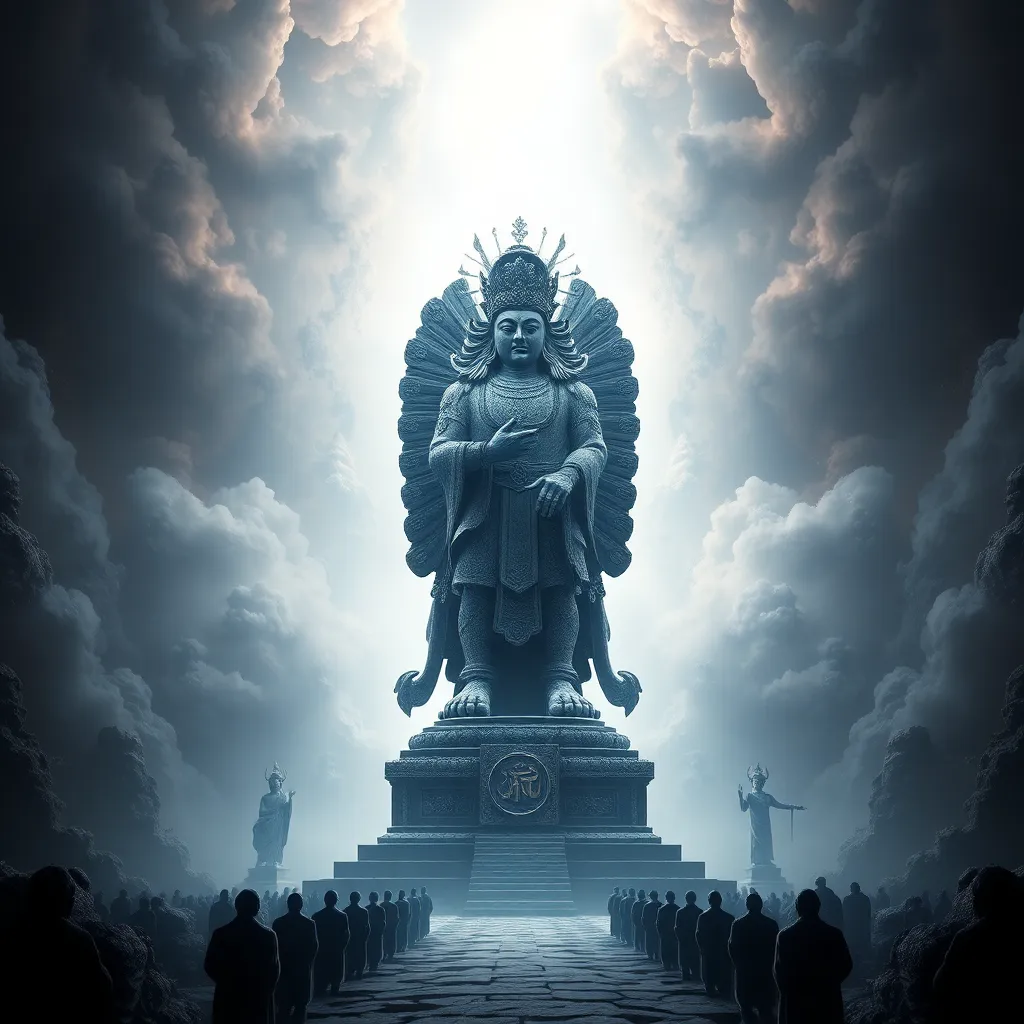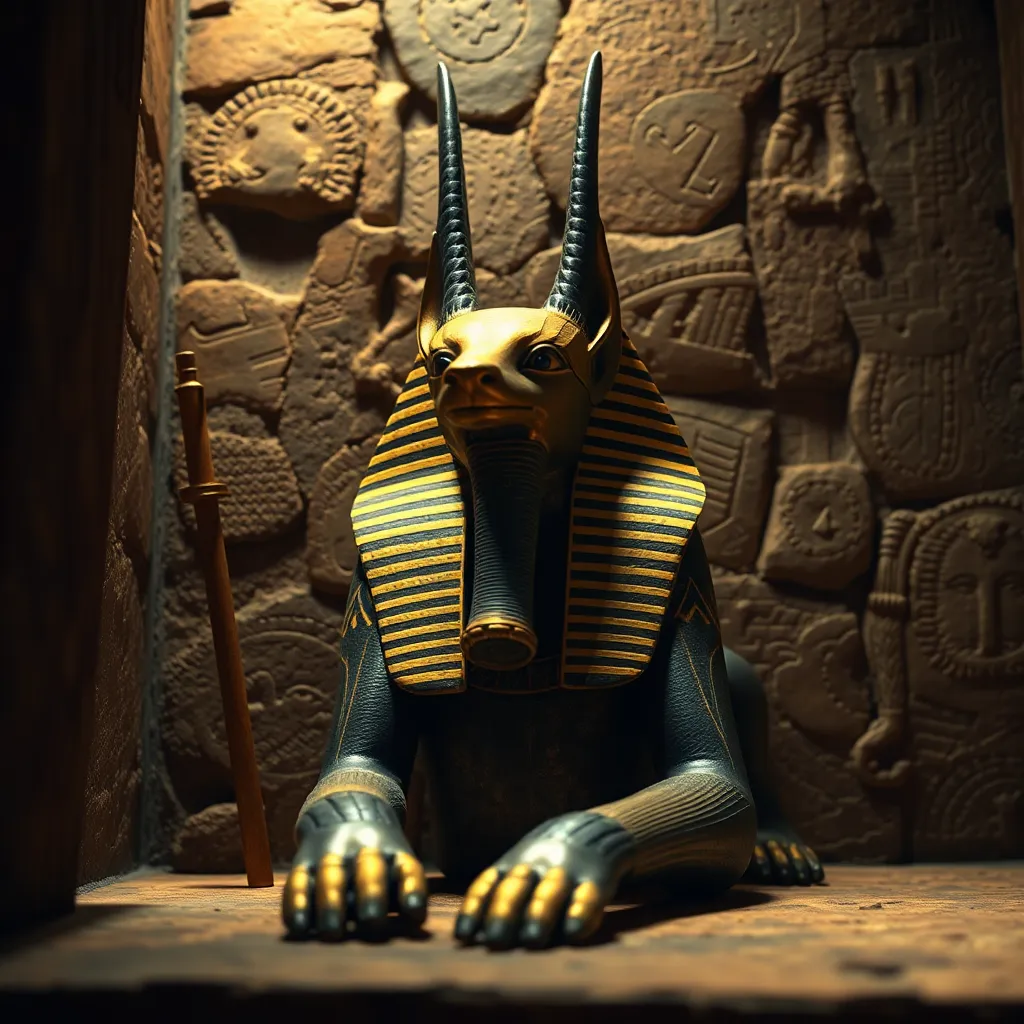Beyond the Guardian: The Lamassu as a Symbol of Power and Authority
I. Introduction
The Lamassu, a mythical creature with the body of a lion or bull, the wings of an eagle, and the head of a human, stands as a remarkable symbol of ancient Mesopotamian artistry and culture. These monumental figures were not merely decorative; they served significant roles in the societies that created them. The Lamassu embodies both protective and authoritative functions, making it a powerful emblem within the historical context of ancient civilizations.
Originating in the cradle of civilization, the Lamassu has roots deeply embedded in the cultural and religious practices of the time. These guardian figures were often placed at the entrances of palaces and temples, serving to ward off evil and symbolize strength. This article explores the multifaceted significance of the Lamassu, arguing that it transcends its role as a guardian figure to become a potent symbol of power and authority in ancient civilizations.
II. Historical Origins of the Lamassu
The Lamassu emerged in Mesopotamian culture around 800 BCE, during the height of the Assyrian Empire. These colossal sculptures were inspired by earlier mythological traditions, evolving into a distinct artistic form that represented both divine protection and royal power.
Throughout the rise and fall of different empires, including the Assyrian and Babylonian, the Lamassu underwent various transformations:
- Assyrian Empire: The Lamassu was prominently featured in the palatial architecture, particularly in the grand entrances of Assyrian kings’ residences.
- Babylonian Influence: The Lamassu was adopted and adapted in Babylonian art, reflecting changes in religious beliefs and royal ideologies.
In mythology, Lamassu were believed to be protective deities, serving to guard cities and temples against chaos and evil spirits. They were often associated with the gods and were integral to the religious practices of the time.
III. Architectural Significance of Lamassu
The architectural placement of the Lamassu was strategic and symbolic. Typically, they were positioned at the entrances of palaces and gates, serving both functional and aesthetic purposes. Their imposing presence was designed to intimidate and awe visitors, reflecting the power of the rulers they guarded.
Artistically, Lamassu are characterized by:
- Design: They feature a hybrid form that combines human, animal, and divine traits, representing strength, wisdom, and protection.
- Materials: Constructed from stone, alabaster, and other durable materials, their craftsmanship showcases the advanced techniques of ancient artisans.
- Craftsmanship: The details in the carvings, including intricate designs on their wings and beards, highlight the high level of artistry achieved by Mesopotamian sculptors.
This duality in their representation embodies the merging of human, animal, and divine characteristics, reinforcing their role as both guardians and symbols of authority.
IV. The Lamassu as a Symbol of Authority
The Lamassu served as a powerful representation of kingship and divine rule in ancient Mesopotamia. Their presence at royal entrances emphasized the connection between the ruler and the divine, legitimizing the king’s authority.
Moreover, Lamassu were used in state propaganda to convey messages of power and dominance:
- They showcased the strength of the empire, deterring potential invaders.
- They reinforced the idea that the king was chosen by the gods to rule, linking political authority to divine favor.
As such, the Lamassu played a crucial role in the legitimization of political authority, acting as a constant reminder of the ruler’s power and the protection offered by the divine.
V. Cultural Interpretations and Adaptations
The influence of the Lamassu extends beyond ancient Mesopotamia, impacting subsequent cultures and artistic movements. Various civilizations have drawn inspiration from the Lamassu in their architectural and artistic endeavors.
In contemporary times, the Lamassu has been reinterpreted in various art forms:
- Modern Art: Artists have explored the themes of power and guardianship, often incorporating Lamassu imagery into their works.
- Media Representations: The Lamassu has appeared in films, literature, and digital art, symbolizing strength and protection.
Its representation in popular culture resonates today, serving as a reminder of the enduring legacy of ancient symbols in modern discourse.
VI. Archaeological Discoveries and Preservation Efforts
Significant archaeological sites, such as the ruins of Nimrud and Nineveh, feature remarkable Lamassu sculptures, highlighting their historical importance. These discoveries have provided invaluable insights into the cultural and political dynamics of ancient Mesopotamian societies.
However, preserving these ancient symbols poses challenges:
- Natural degradation and environmental factors threaten the structural integrity of Lamassu sculptures.
- Human conflict and vandalism have led to the destruction of these cultural artifacts.
The Lamassu’s preservation is crucial for understanding ancient power dynamics and the socio-political landscapes of Mesopotamia.
VII. The Lamassu in Modern Political Discourse
In contemporary discussions, the Lamassu serves as a powerful metaphor for authority and protection. Political leaders and activists have utilized the imagery of the Lamassu to convey messages of strength and resilience.
Symbolically, the Lamassu can be seen in:
- Political Movements: Groups advocating for justice and rights have adopted the Lamassu as an emblem of their cause.
- Rhetoric: The Lamassu’s imagery is often invoked in speeches and campaigns to emphasize themes of guardianship and strength.
The relevance of the Lamassu in today’s global context underscores its enduring power as a symbol of authority and protection.
VIII. Conclusion
In summary, the Lamassu represents a multifaceted symbol of power and authority that transcends time and culture. Its origins in ancient Mesopotamia highlight its significance as a guardian figure, while its architectural and artistic features reinforce its role as a representation of divine rule and kingship.
Today, the Lamassu continues to resonate, inspiring modern interpretations and serving as a poignant reminder of ancient symbols in contemporary society. The enduring legacy of the Lamassu speaks to the universal themes of power, protection, and cultural identity that remain relevant across generations.




